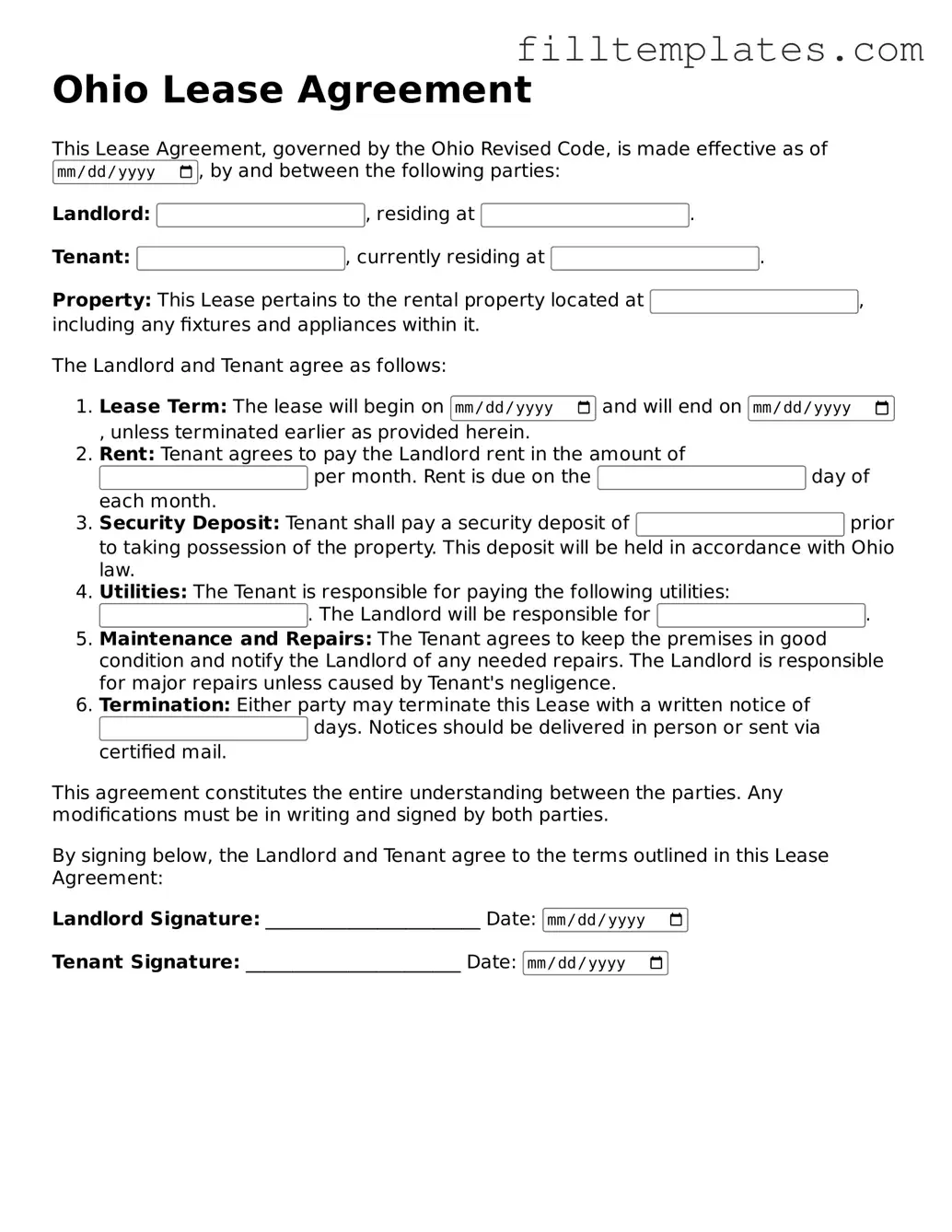Official Lease Agreement Template for the State of Ohio
The Ohio Lease Agreement form is a legal document that outlines the terms and conditions between a landlord and tenant for renting residential or commercial property in Ohio. This agreement serves to protect the rights of both parties while ensuring clarity on responsibilities, payment terms, and property use. Understanding this form is essential for anyone entering into a rental arrangement in the state.
Open Lease Agreement Editor
